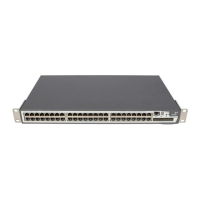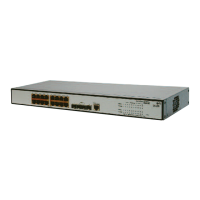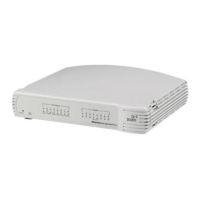88 CHAPTER 6: UPGRADING SOFTWARE
The following steps enable you to backup each Switch in the fabric:
1 The default configuration file must have the name 3ComOScfg.def.
This file is only used if there is no active configuration file (.cfg) in the
flash file system. The default configuration file is the same for every
Switch 5500 of the same type (i.e Switch 5500 28-port) and is different
to the file for a Switch 5500 of a different type (i.e Switch 5500 52-port).
A sample default configuration file is provided by factory default with the
Switch and is not supplied in this upgrade.
Enter the following command:
more 3comoscfg.def
The display similar to the following shows on the first line of the file:
#28-port 3com version 3.1.4
This file is infrequently changed, so the version number may not match
the application software version number.
The default configuration file can be created by saving the configuration
and renaming the xxx.cfg file as 3ComOScfg.def.
To back up the default configuration file on each Switch in the fabric,
enter:
copy unit1>flash:/3ComOScfg.def
unit1>flash:/030100cfg.def
Replace unit1 with unit2 and so on for each Switch in the fabric.
2 The active configuration file can been given any name, provided it ends in
the extension .cfg. 3Com recommends that each fabric is given a
unique configuration file name so that when the file is saved to an
external TFTP server, it is clear which fabric the file belongs to.
To back up the active configuration file on each Switch in the fabric,
enter:
copy unit1>flash:/3ComOScfg.cfg
unit1>flash:/030100cfg.cfg
Replace unit1 with unit2 and so on for each Switch in the fabric.
3Com recommends that you save the active configuration file for each
Switch in the fabric is also saved to an external storage device. To save the
active configuration file to a TFTP server in User View enter:
tftp aaa.aaa.aaa.aaa put unit1>flash:/3ComOScfg.cfg
3ComOScfg_1.cfg

